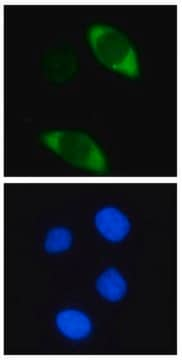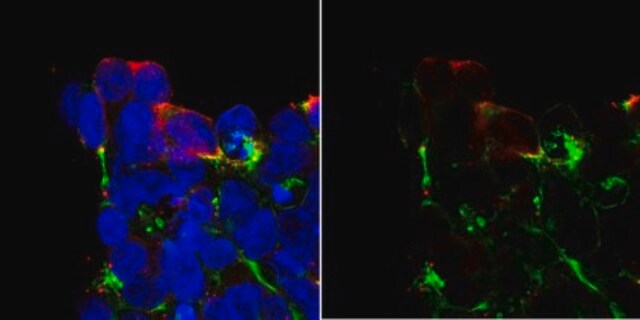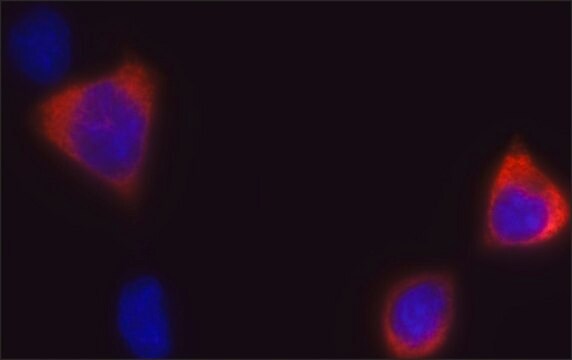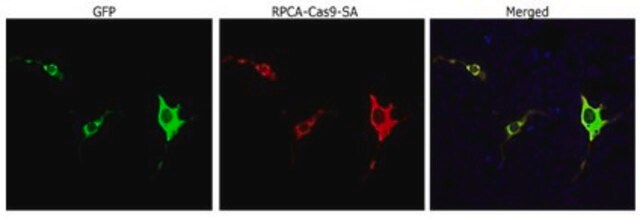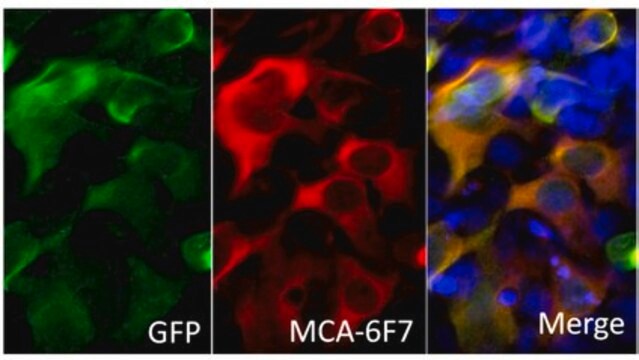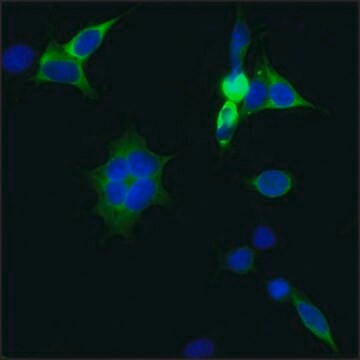MABS1291
Anti-Cas9 Antibody, C-term. clone 10C11-A12
clone 10C11-A12, from mouse
Synonym(s):
CRISPR-associated endonuclease Cas9/Csn1, SpyCas9
Select a Size
Select a Size
About This Item
Recommended Products
biological source
mouse
Quality Level
antibody form
purified antibody
antibody product type
primary antibodies
clone
10C11-A12, monoclonal
species reactivity
bacteria
technique(s)
immunocytochemistry: suitable
immunoprecipitation (IP): suitable
western blot: suitable
isotype
IgG1κ
NCBI accession no.
UniProt accession no.
General description
Specificity
Immunogen
Application
Immunoprecipitation Analysis: 13.4 µg from a representative lot immunoprecipitated exogenously expressed Cas9 in 250 µg of lysate from transfected, but not untransfected, HeLa cells (Courtesy of Dr. Stefan Schuechner and Dr. Egon Ogris, Medical University of Vienna, Austria).
Western Blotting Analysis: 1.675 µg/mL from a representative lot detected exogenously expressed Cas9 in 20 µg of lysate from transfected, but not untransfected, HeLa cells (Courtesy of Dr. Stefan Schuechner and Dr. Egon Ogris, Medical University of Vienna, Austria).
Western Blotting Analysis: Clone 10C11-A12 hybridoma culture supernatant detected doxycycline treatment-induced expression of a FLAG-tagged Cas9 construct under the control of the PTight promoter in a HeLa-derived Tet-ON cell line (Courtesy of Dr. Stefan Schuechner and Dr. Egon Ogris, Medical University of Vienna, Austria).
Quality
Western Blotting Analysis: 0.5 µg/mL of this antibody detected the exogenously expressed Cas9 in 10 µg lysate from transfected HeLa cells.
Target description
Physical form
Other Notes
Not finding the right product?
Try our Product Selector Tool.
Storage Class Code
12 - Non Combustible Liquids
WGK
WGK 1
Flash Point(F)
Not applicable
Flash Point(C)
Not applicable
Certificates of Analysis (COA)
Search for Certificates of Analysis (COA) by entering the products Lot/Batch Number. Lot and Batch Numbers can be found on a product’s label following the words ‘Lot’ or ‘Batch’.
Already Own This Product?
Find documentation for the products that you have recently purchased in the Document Library.
Our team of scientists has experience in all areas of research including Life Science, Material Science, Chemical Synthesis, Chromatography, Analytical and many others.
Contact Technical Service
